Forty years have gone by. A secret cellar in a house in District 3, southern Ho Chi Minh City, has become a historical site due to its significance during the war. Nearly three tonnes of weapons were kept in the cellar by Saigon Commandos to attack the Presidential Palace during the Tet Offensive in 1968. It is one among many untold valuable exhibits that manifest the brilliant feats of the Vietnamese people and army in their fight for national reunification that became true on April 30, 1975
The house No. 287/70 is located between two lanes each running to Nguyen Dinh Chieu and Vo Van Tan Streets, with a ground floor of about 37m2 (14.9m long and 2.5m wide). The host is Tran Van Lai (Nam Lai) who has the nickname “Mai Hong Que”. He bought the house in 1966 and for three years till 1968 he dug the secret cellar.
In those years, Nam Lai worked for the Presidential Palace as a contractor, and because he used to go to the U.S. Operations Mission (USOM) for project bidding, he was called Nam U-SOM. But at the same time he undertook secret activities of the Saigon Commandos’ Security Unit.
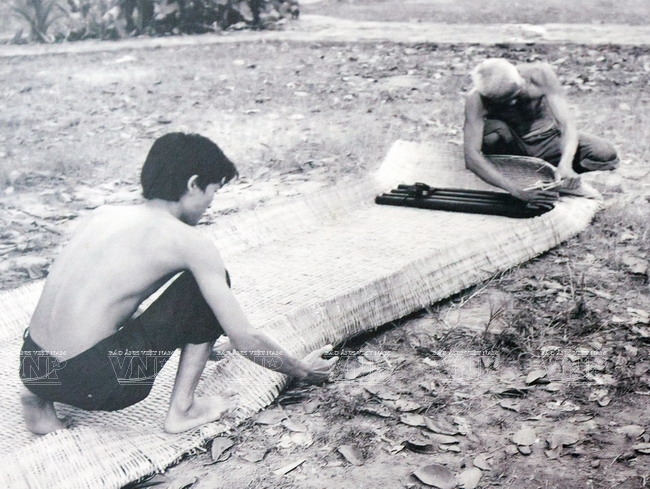

Messengers transport weapons to the revolutionary base in Thai My-Cu Chi. Photo: File
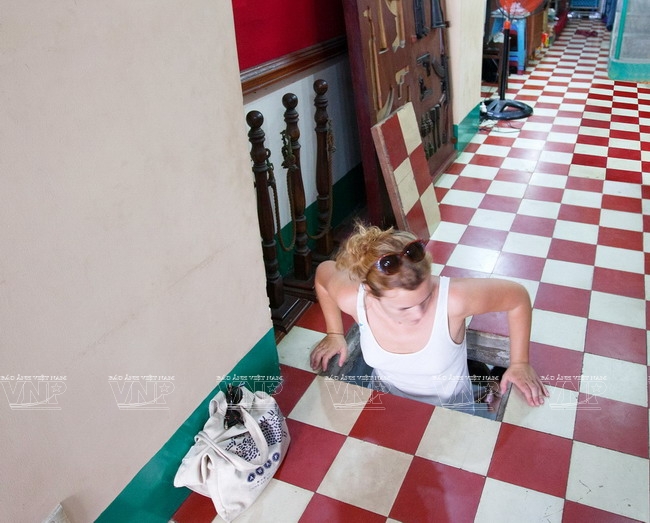
Foreign tourists visit and learn about a historical relic on Saigon commandos’ feat of battle. Photo: Le Minh/VNP |
To dig the cellar, Lai moved his wife and children to live in Go Vap, saying he had to repair the house’s toilet and water sewerage. Working in day time and digging the cellar at night, he put the dirt into boxes, put them into car and drove to the far off district of Binh Chanh to dispose of it. After seven months of working, the cellar was built 2 meters long, 1.2 meters wide and 2.5 meters high. It had four exits, and its walls and floor were covered with thick layers of cement to prevent moisture.
Inside the cellar, there were four round frames connected with the water discharge pipes which were large enough for a person to get through. The cellar’s cover, placed near the stairs, was made of six pieces of bricks glued together. On top there was a bolt to fasten the cover. To open it up, just pull the bolt by a ring, then a person can get into the cellar.
When the cellar was completed, the Security Unit was entrusted to transport weapons and hide them there. A hollow timber container was made by Tran Phu Cuong (nicknamed Nam Moc), a commando from Saigon, and was transported to Phuoc Hiep Commune in Cu Chi District. The weapons were put into the container which was carried by a cow cart to the assigned point (the whole process went on like a trade deal). Then the container with the weapons inside was transported to a car with a license number EC 6045 and driven by Nguyen Van Bao (Ba Bao) to the secret cellar in Nam Lai’s house.
The car used to arrive at Lai’s house late in the evening to avoid his neighbors’ curiosity and inside the container there were different kinds of weapons such as guns, rifles, cartridges, bazooka B40 and explosives.
On January 31, 1968 (early second day of the lunar New Year of Mau Than), 15 commandos of Unit 5 came to house No. 287/70 to get the weapons. They departed the house in three cars and one Honda motorbike to drive to the Presidential Palace. Under the command of Truong Hoang Thanh (Ba Thanh), they performed bold attacks on the palace. Later, although the house was occupied by the enemy, the cellar was still kept secret.
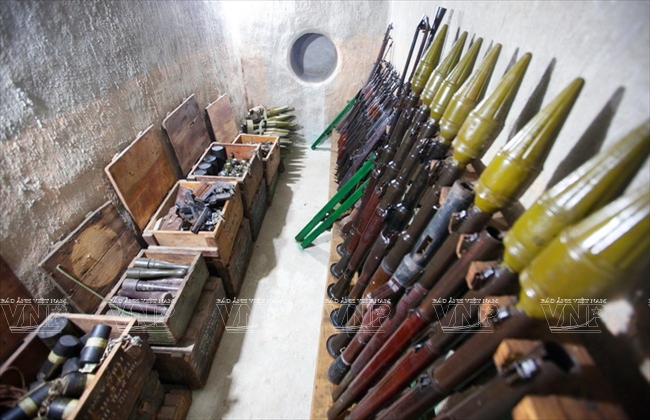
A corner of the cellar containing about three tonnes of weapons of the Saigon Commandos
in house No. 287/70 on Nguyen Dinh Chieu Road, Ward 5, District 3, Ho Chi Minh City
used to attack the Presidential Palace in 1968. Photo: Le Minh/VNP
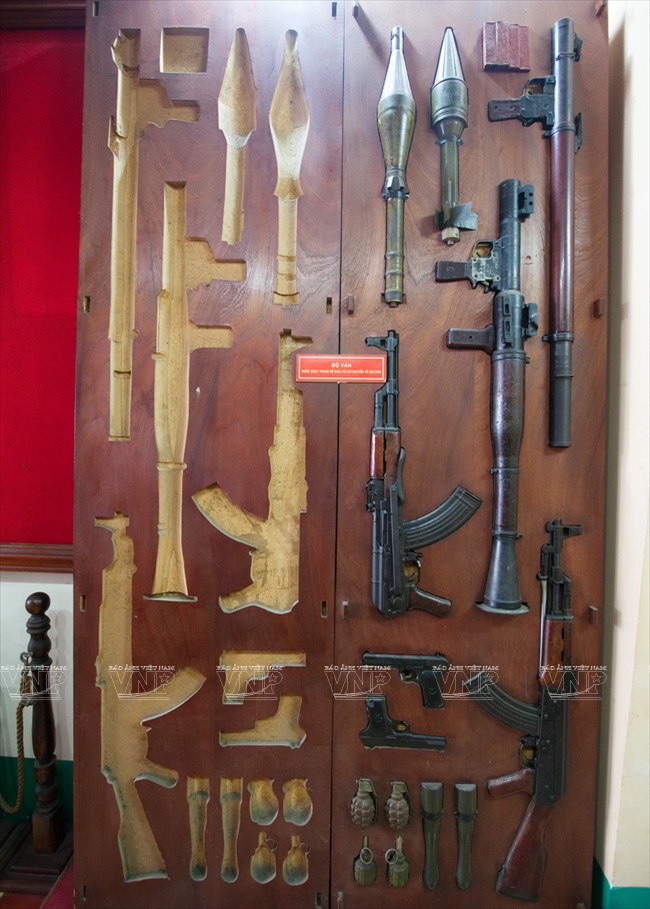
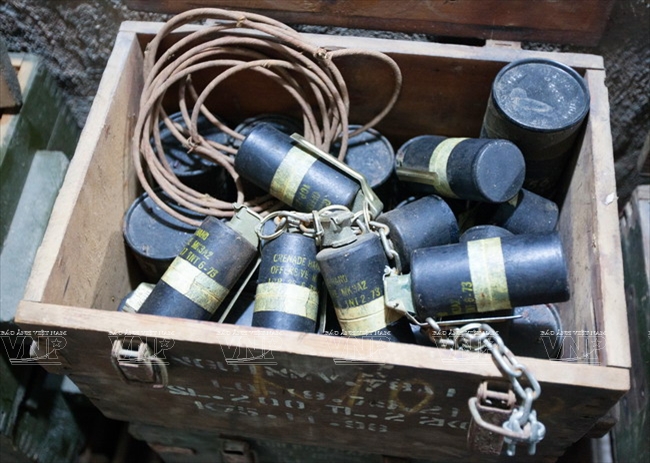
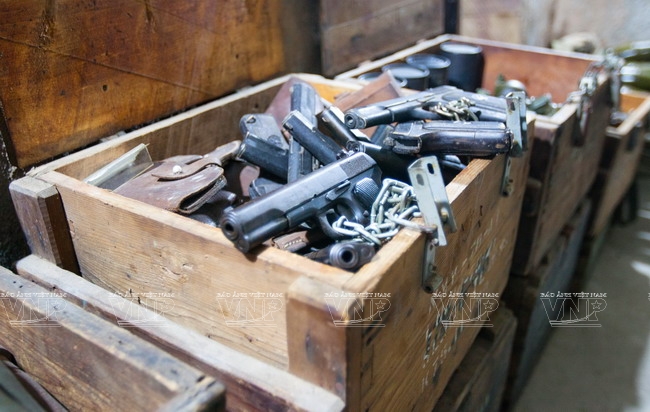

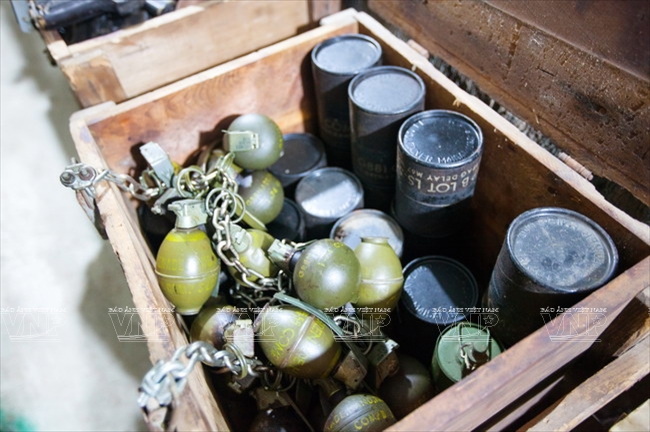
Different kinds of weapons in the secret cellar used to attack Presidential Palace in 1968.
Photo: Le Minh/VNP
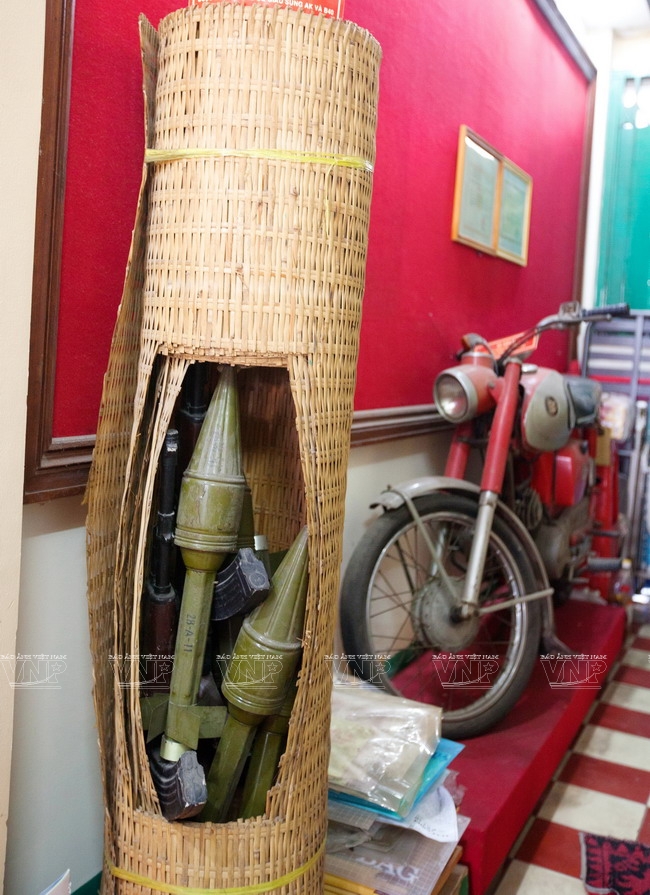
Weapons like AK and B40 are hidden in bamboo containers. Photo: Le Minh/VNP

Foreign tourists learn about the secret cellar
where about three tonnes of weapons of the Saigon Commandos were hidden. Photo: Le Minh/VNP |
Since the liberation of southern Vietnam on April 30, 1975, the house and its cellar has become a site for many visitors, especially youths, to come to learn more about the past war and activities by the city’s commandos.
In 1986, it was classified as a national-level cultural-historical relic. When alive, General Vo Nguyen Giap (1911-2013) visited the cellar and he praised the commandos’ brave spirit.
The secret cellar holding weapons during the war by the Saigon commandos receives around 2,000 visitors a year, with most of them being pupils, students, and foreigners. Makoto, a Japanese tourist, after visiting the cellar, wrote in the register book: “I respect the feat of arms that the Vietnamese people had recorded in the war. Your younger generations have many reasons to be proud of your country’s history.”
Story: Nguyen Vu Thanh Dat
Photos: Le Minh
phamtrangnhung